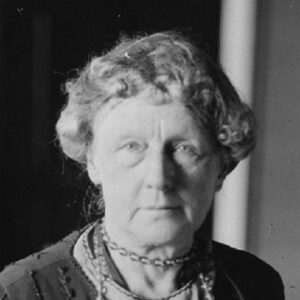Annie Jump Cannon was an American astronomer and physicist who produced some of the most significant contributions to the discipline of astronomy, laying the groundwork for what is now known as astronomy. Cannon’s mother pushed her to pursue astronomy, and she went on to study physics as a result. Cannon is credited for identifying more than half a million stars, and her classification approach is still considered the gold standard for star classification. She is said to have been able to identify a star merely by looking at it, and the books in which she presented her findings are still considered the most authoritative by experienced astronomers. On the other hand, it’s worth noting that she worked in academia at a period when women weren’t encouraged to do so, and her role in debunking that belief deserves to be recognized. She dedicated her life to studying and unknowingly knocked through many obstacles, thus it is fair to say that she has left a rich legacy that is still honored in scientific circles today.
Childhood and Adolescence
Wilson Cannon and Mary Jump had Annie Jump Cannon on December 11, 1863, in Dover, Delaware. Her father served as a state legislator and owned a shipbuilding company. His father’s second wife, Mary, was her mother.
Cannon was the eldest of three daughters in the family, which is probably why her mother took such an interest in her. Annie Jump Cannon was encouraged to study the constellations, and she insisted on studying mathematics and astronomy when she grew up.
Annie Jump Cannon attended the prestigious Wilmington Conference Academy in Dover, where she excelled in the sciences, particularly mathematics.
Annie Jump Cannon was accepted into the elite Wellesley College in Boston, Massachusetts, after graduating in 1880. Physics, mathematics, and astronomy were among her subjects. Sarah Frances Whiting, a well-known female physicist at the time, was also one of her professors.
Cannon earned a bachelor’s degree in physics from Wellesley College in 1884. However, she returned to her hometown of Dover, Delaware, after failing to find a suitable job.
The career of Annie Jump Cannon
Cannon spent her time at home after graduating from Wellesley College researching the subtleties of photography. When her mother died in 1894, she went to look for work and was offered a physics teaching position at Wellesley College by her former teacher Sarah Frances Whiting.
During her time as a teacher at Wellesley College, Cannon pursued post-graduate studies in chemistry and astronomy, and eventually enrolled at Radcliffe College due to the superior resources available.
She was appointed as an assistant at Harvard College Observatory in 1896. Cannon’s job at the Harvard College Observatory was part of a larger outreach effort by Harvard Observatory director Edward C. Pickering to include women in his star-classification study.
In 1901, Cannon devised a method for categorizing stars into distinct classes based on their temperatures and spectral classifications.
Annie Jump Cannon’s work for the Harvard College Observatory was well-received, and her contributions were highly acknowledged. The Observatory’s curator, William Fleming, retired in 1911, and Annie Jump Cannon took over as the new curator. She stepped down after 29 years on the job.
Annie Jump Cannon expanded on her research and released the Henry Draper Extension, which identified hundreds of thousands of additional stars that would be crucial for future astronomy research. The book was first published in 1924 and is regarded as a foundational work in the field of astronomy.
Annie Jump Cannon was named the William Cranch Bond Professor of Astronomy at Harvard University in 1938.
Major Projects of Annie Jump Cannon
Annie Jump Cannon devoted herself to astronomical research until her death, and during her career as a scholar, she made ground-breaking discoveries in her profession. Her greatest accomplishment, in terms of star classification, is without a doubt the fact that she developed a standard process that is still used today.
More than half a million stars in the galaxy were identified and classified by Cannon. In the volumes of the Henry Draper Extension and Henry Draper Catalogue, she has chronicled her whole body of work in this area.
Achievements & Awards
Annie Jump Cannon was the first woman to get an honorary doctorate degree from the prestigious Oxford University. In 1925, she received her bachelor’s degree.
The National Academy of Sciences awarded her the Henry Draper Medal in 1931.
Her name is commemorated by a lunar crater named ‘Cannon’ and an asteroid named ‘1120 Cannonia.’
Personal History and Legacy
Cannon was practically deaf after contracting Scarlet fever as a child, and this was the reason she never married. She was a reclusive woman who dedicated her life to astronomy studies.
Annie Jump Cannon died in Cambridge, Massachusetts, on April 13, 1941, at the age of 77. Eight years before her death, she established the Annie Jump Cannon Award for exceptional female astronomers in North America, which is still given out today.
Estimated Net Worth
The estimated net worth of Annie Jump Cannon is unknown.


